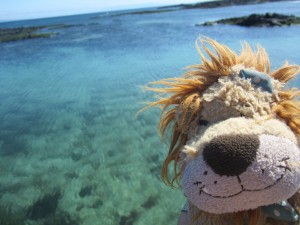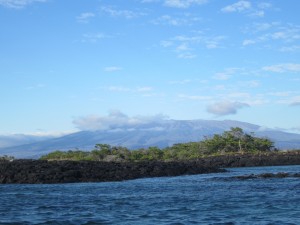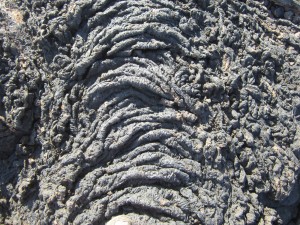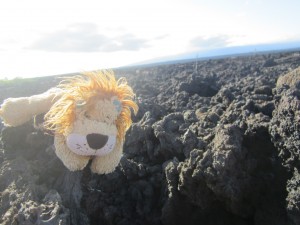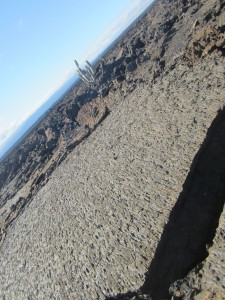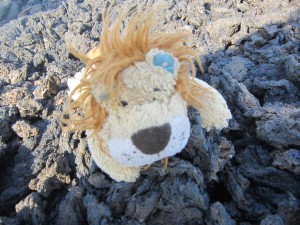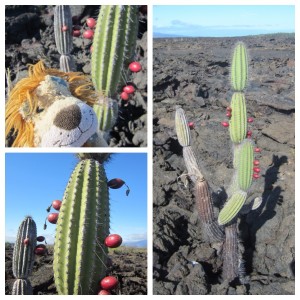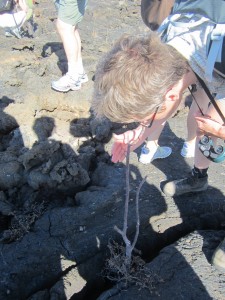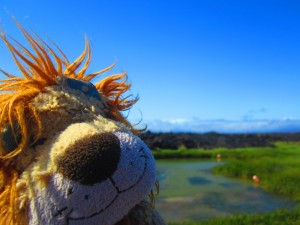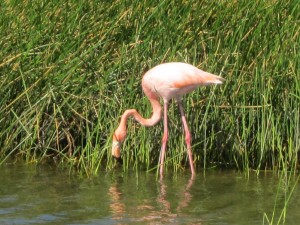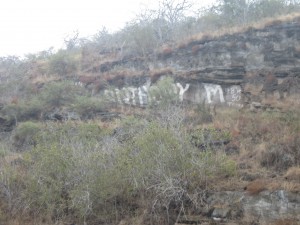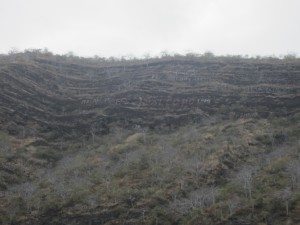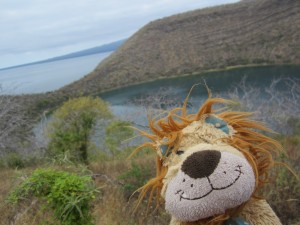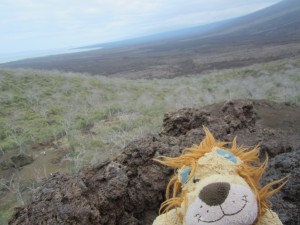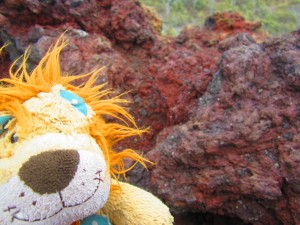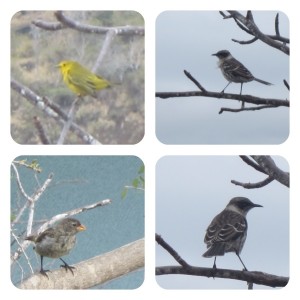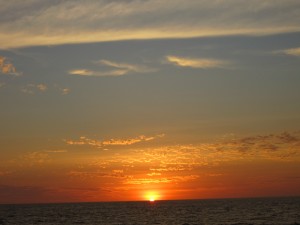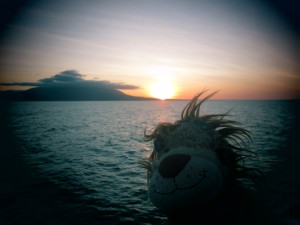As you have already discovered in one of Lewis’ previous blogs, the Galapagos Islands are particularly unique due to their volcanic nature, particularly in the western isles where the volcanoes are still active. Lewis was particularly impressed by his visit to Punto Moreno on Isabela where he discovered that the last volcanic eruption only took place 6 years ago! He hoped that just for his visit, these volcanoes would decide to be silent!
As Lewis the Lion approached the island, he could see the volcano in the distance. It looked as if a giant knife had sliced the top off it, exposing the crater below.
Lewis the Lion thought that it must have spewed its guts up as he marvelled at the relatively newly fallen volcanic rock which formed all sorts of weird and wonderful shapes and patterns, e.g. Some looked like tresses of hair or rows of worms lined up beside each other.
He discovered a special kind of volcanic stone called a-a lava and it was so sharp and spiky that Helen almost fell over once as she caught the front of her trainers on it and put a hole in them!
As Helen and the others walked across the rock it sounded as if they were breaking tiles: there was a tinny quality due to the metallic properties of the rock. This smooth, billowy lava is called pahoehoe lava.
On closer inspection, Lewis the Lion could also see lots of different colours in the rock due to the rich minerals in them.
He also marvelled at the tenacity of cactus to adapt and survive in so many harsh environments. He couldn’t believe that amongst the volcanic rock, cactuses had sprouted up, some even producing fruit!
From within the cracks and crevices, also grew a special type of tree called ‘palo santo’ which produced a smell like incense.
Close to this desolate landscape there were signs of life returning to this part of the island as a salt water lagoon had formed and flamingos were feeding in it.
Lewis the Lion thought that it was wonderful how nature adapted and that this volcanic island was now welcoming some of the wildlife back.
One morning, Lewis awoke on board the Archipell II to a rather alarming sight.
The boat had stopped in a bay called Tagus Cove which was surrounded by graffiti scratched into the rock face. Who would have done such a thing to such a beautiful island?
He soon learnt, as he looked at the writing more closely, that some of these inscriptions had been there for a very long time – perhaps even more than a century.
They were the etchings of pirates claiming their stake on the land. Lewis the Lion thought that they were very simple-minded to have done that to such a place of beauty but at the same time was intrigued by the history of the site.
There were some wonderful cliffs and caves around this point where Lewis and his friends visited in the zodiacs. All sorts of wildlife was to be found here, including blue-footed boobies, penguins, seals, pelicans, storks and mocking birds.
A little further on, Lewis the Lion was surprised to discover a freshwater lake – Darwin’s Freshwater Lake, just metres from the salty sea.
Again he marvelled at nature. The landscapes. The colours. The wildlife.
He wondered if Charles Darwin had also been equally spellbound by these magnificent islands over 200 years ago when he came here and wrote his Theory of Evolution based on his studies of finches?
Finally, on Lewis the Lion’s last night in the Galapagos Islands, he was mesmerised by a magnificent sunset as he looked out on to the horizon across the Pacific Ocean. It was as if the ocean simply rolled on forever.
He suddenly felt very small and humbled at the wonder of nature. What a lucky lion he was to experience it all in this way!
If you could chose a place on earth to see a sunset in a place of natural beauty, where would it be? Why?

